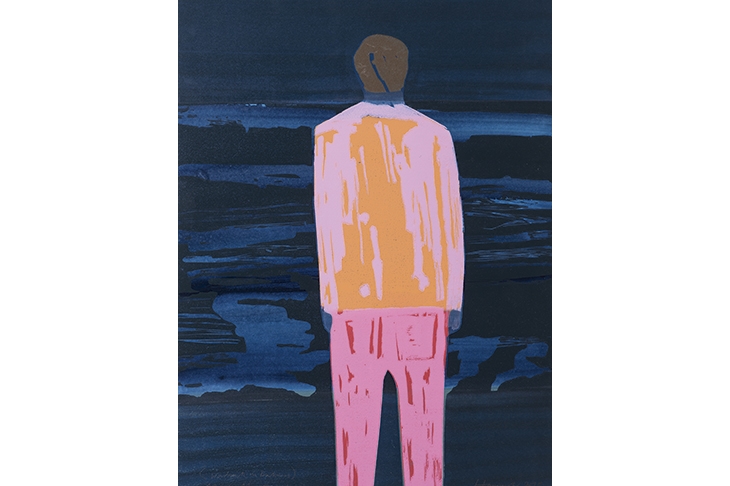Several years ago, I was interviewing the garden writer and designer Sarah Raven at her home in Sussex when a tall, tanned figure bounded up from the woods towards us. It was Adam Nicolson, her husband, and he carried an axe over his shoulder. A few months later, an email arrived from Nicolson, inviting me to come with him and a gang of his friends on a ‘moon walk’ in the Quantocks. I couldn’t make it, but realise now that the night walk was part of the research for his extraordinary and engrossing record of the time William and Dorothy Wordsworth spent in Somerset with Samuel Taylor Coleridge. This ‘year of marvels’ (from June 1797 to September 1798) would end with the publication of the first great work of Romanticism, the Lyrical Ballads. The Quantock hills were the ‘refuge-cum-laboratory’ in which the poetic visions of two of our most celebrated authors were formed, and where this era-defining book came into being.
The Making of Poetry operates on a number of levels. Most simply, it is a deeply researched record of the Wordsworths’ happy existence at Alfoxden House, and of Coleridge’s and his put-upon wife Sara’s time in a less salubrious cottage in nearby Stowey. It draws on journals and drafts, and on records of the numerous if faintly ridiculous attempts made by the authorities to infiltrate the radical group that orbited the poets. Nicolson doesn’t go easy on his heroes. He asks pointedly why
the radical challenge of so many dimensions of these men’s lives [did] not extend to a sense of fairness towards… the women who were helping them become who they wanted to be.
The book is also a lucid and approachable guide to the poetry, showing how the Lyrical Ballads came out of their place and time, out of the ideas that the Wordsworths and Coleridge (and the friends who stopped by — Southey, Lamb, Thelwall, Hazlitt) discussed on their walks across the hills. Nicolson’s language is always clear and free of critical obfuscation, but this doesn’t prevent him from performing a series of startlingly original readings of the poems. He acknowledges early on the influence of Richard Holmes, that most readable of biographers, and calls The Making of Poetry ‘a tributary to the great Holmesian stream’. Certainly, like Holmes, Nicolson gives the impression of caring about his reader: a profoundly democratic impulse lies behind his whole project.
But there’s something more interesting and complex going on in this book. Nicolson admits at the outset that he is not an academic, and that rather than continue his studies, he spent his twenties walking vast distances across Britain and Europe. His The Mighty Dead, published in 2014, sought to locate Homer in contemporary manifestations of bellicose masculinity, to bring the deep past and its greatest poet to life by showing the author meeting Homeric ideals in the present day. Previously Nicolson had written largely autobiographical works about sailing and walking, about Sissinghurst and the Shiant Isles (the magnificent Sea Room), all of which illuminated the personal with reference to a dazzlingly wide range of authors.
The Mighty Dead changed this: it sought to bring the reader closer to Homer by situating the epics within the context of Nicolson’s own life. The Making of Poetry continues this approach and builds upon it spectacularly. Nicolson asserts that the poems are in deep dialogue with the landscape in which they were written; that the Quantocks play a starring role, and that by understanding this landscape — ‘by feeling it on the skin’ — we can get closer to the poetry.
The book is intercut with episodes in Nicolson’s characteristically lyrical prose in which he describes walking the paths and hills the poets walked, sleeping as close as he could to where they slept. There are also a series of exquisite woodcuts (including the cover and endpapers) by the artist Tom Hammick, each of them made with wood foraged from Alfoxden. It’s a brilliant conceit, and Hammick’s art makes this one of the most beautiful books I’ve seen.
In the end, Nicolson’s thesis is clear. In a deep and revelatory reading of ‘Tintern Abbey’, he contends that by the end of the year Wordsworth had struck out on his own poetically. For although, as he says in an early chapter, ‘Coleridge had changed his relationship to the world’, the year had enabled Wordsworth to absorb all the lessons that Coleridge, that ‘volcano of ideas’, could teach him. It’s a touching irony that the book they collaborated on came out just as their fortunes diverged. Walter Benjamin said of Proust that all great books establish their own genre. Lyrical Ballads certainly did that.
The Making of Poetry is another great book, a brilliant record of the central year in the lives of these two violently creative minds, and of Dorothy Wordsworth’s equal, if less heralded, brilliance. It’s quite unlike anything I’ve read before.
The Making of Poetry: Coleridge, the Wordsworths and Their Year of Marvels
Author: Adam Nicolson
Publisher: William Collins
Page count: 390
Price: £25






Comments